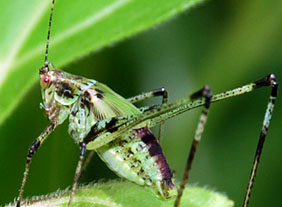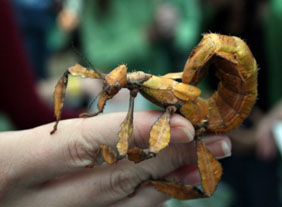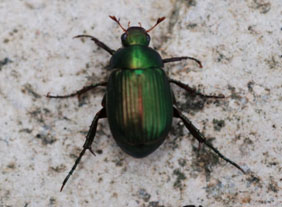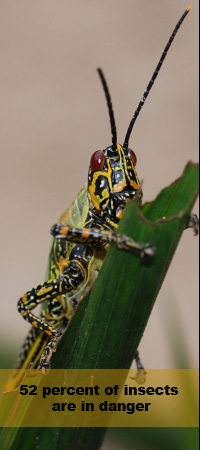|
Major threats to insects include habitat destruction, displacement by introduced species, alteration of habitat by chemical pollutants (e.g., pesticides), hybridization with other species, and over-harvesting.
The term "endangered species" is usually associated with emblematic animals (e.g., tigers, pandas, whales), however the vast majority of species on the verge of extinction is insects.
Of the 1,255 insects evaluated, roughly 600 species are at risk of extinction worldwide (IUCN 2007). In the United States, 48 insects are listed as endangered and threatened by U.S. Fish and Wildlife Service.
An estimate of 3.4 million insect species live on Earth with most of them in tropical regions. If insects go extinct at a similar rate as some other life forms, then about thousands of species could have disappeared over the same time period.
The loss of keystone insect species is especially detrimental for ecosystems and people. Plant-eating insects are likely to vanish when the plants they feed on die. A massive population decline in chestnut trees due to chestnut blight in the 20th century took at least three species of butterfly with it.
A large proportion of the total diversity of insects occupies restricted small range making their populations highly vulnerable to human-induced extinctions.
Examples of endangered insects include:
In the Seychelles, the giant flightless darkling beetle (Polposipus herculeanus) is an endangered insect that occupies dead trees on the small Frigate Island.
In England, the removal the larval foodplant of the Barberry Carpet Moth (Pareulype berberata) led to a sharp decline of this once widespread moth. In the 1980s its known distribution was reduced to just one locality. Since then, the reintroduction of Barberry through captive bred moths has reversed the decline.
In the United States, the endangered Tahoe stonefly (Capnia lacustra) is only found in Lake Tahoe at depths of 60-80 m (California). Further, it is the only stonefly in the world known to be fully aquatic in the adult stage.
In Australia, the Illidge's ant-blue butterfly (Acrodipsas illidgei) became an endangered species due to the dramatic destruction of mangrove habitats.
Continue on page 6
|
|

An estimate of 3.4 million insect species live
on Earth. © Pierre Fidenci

Insects can play an important role in
wildlife conservation awareness. © Eunkyung Chae

Beetles (Coleoptera) constitute the largest order
of insects with more than 300,000 known species. © Pierre Fidenci
|









